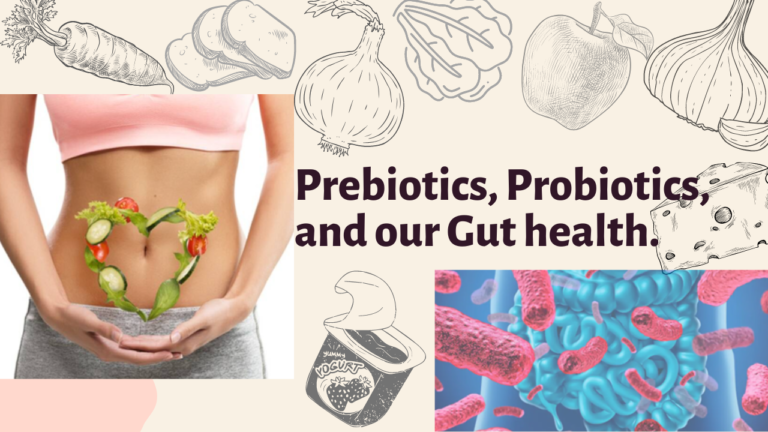Food & Beverages
Preface-
“ A coffee a day keeps grumpy away “. Coffee is loved by a lot of people. It is refreshing, aromatic, dark, bitter and generally served with cake, bagels, crepes, etc. Various methods are used to prepare coffee and it has some amazing health benefits too. Read more about coffee in the article.
Introduction –
Coffee is cherished by a lot of people globally. Coffee is indigenous to Central Africa and Asia. It is prepared by brewing roasted coffee beans and has a stimulating effect as it has caffeine within it.
Coffee is dark in colour, bitter, and slightly acidic. It is usually served hot but chilled coffee is also quite common. It is often served with doughnuts, cake, crepes, scrambled eggs, bagels, etc.
Three species of coffee namely:
Coffea arabica
Coffea robusta [ C. canephora]
Coffea liberica
are cultivated due to their commercial importance. C. arabica is cultivated in India, in the states of Karnataka, Kerala, and Tamil Nadu. It came to India via Arabia. C. robusta is also cultivated in India at lower elevations. C. liberica is not grown in India as the plant is susceptible to diseases.
Globally, Brazil is the largest producer and exporter of C. arabica. Columbia is also one of the largest producers of coffee. Some of the choicest grades of coffee are cultivated by Arabia, Java, and Venezuela.
The average composition of green and roasted Coffea arabica [100 grams] is given in the table below:
| Coffea arabica [100 g] | Moisture | Protein | Fat | Sugar | Dextrose | Ash | Caffeine | Chlorogenic acid |
| Green | 8.98% | 9.87g | 12.60g | 9.55g | 0.87g | 3.74g | 1.08g | 8.46g |
| Roasted | 0.63% | 11.23g | 13.59g | 0.43g | 1.24g | 4.56g | 0.82g | 4.74g |

Image credits – https://twitter.com/swivelcoffee/status/933150617647771648

Image credits – https://pouroverproject.com/coffee-types-varieties-origins/
The coffee plant –
Coffee is an evergreen shrub or a small tree. It grows up to 6 to 20 feet in height depending on the species. In India, the plant is kept pruned down to a height of 4 to 5 feet. Coffee shrubs or small trees are native to Tropical and Southern Africa and Tropical Asia.
The coffee plant produces white flowers which give birth to a fruit. The fruit is somewhat similar to cherry and is red or purple. The fruits are described as “epigynous berries” or “indehiscent drupes” and are commonly called “coffee cherries”.
The fleshy pulp of the fruit encompasses two oval greenish grey seeds also called “coffee beans”. The beans are covered by the silver skin and then by a parchment. The ripe beans are used for making coffee.

Coffee plant.
Image credits – https://lazyflora.com/blogs/news/coffee-bean-plant-care-tips-and-fun-facts

Coffee cherry.
Image credits – https://www.thewildwaycoffee.com/blog/lizzoandcoffee
Manufacturing of coffee powder –
The following steps are involved in coffee processing:
- Harvesting
- Curing {Fermentation}
- Drying
- Hulling of beans
- Roasting the beans
- Cooling the beans
- Grinding the beans
- Blending
- Packaging.
1. Harvesting –
According to the species, approximately 3 to 4 years are taken by coffee trees to bear fruits. The coffee cherry is harvested when it is bright and deep red. The crop is picked by hand or by a machine.
In Brazil, the crop is picked using machines because the landscape is relatively flat and the coffee fields are huge. Coffee is harvested in one of two ways:
Strip picked – All cherries are removed from the branch at the same time, either by hand or by a machine.
Selectively picked – It is particularly used to harvest the finer Arabica beans [ Coffea arabica]. The ripe cherries are individually picked by hand.
2. Curing (Fermentation) –
In this process the colour of the beans changes to brown from dull green. The Chlorogenic acid present in the coffee splits into Quinic acid and Caffeic acid, leading to a minute loss of caffeine.
Curing is done in 2 ways – The Dry method and the Wet method.
Dry method:

Wet method:
It consists of the following steps:

3. Drying –
Beans processed using the wet method should be dried to approximately 11% moisture to prepare them for storage. These beans still inside the parchment envelope can be sun-dried or machine-dried in large tumblers. The dried beans are known as parchment coffee.
4. Hulling of beans –
The Endocarp of the wet processed coffee is removed using hulling machinery. The exocarp, mesocarp, and endocarp of the dry processed coffee are removed using hulling machinery. After hulling, polishing [optional process] of beans is done where the remaining silver skin present on the beans is removed.
Grading and sorting of the beans are done according to their size and weight. During this process, defective beans [ over-fermented beans, insect-infested, etc] are discarded using hand or machinery. Finally, green beans are obtained.
5. Roasting the beans –
Coffee beans are roasted at approximately 175-degree Celsius. This process converts the green coffee beans to aromatic brown beans.
6. Cooling –
The Fanning method is applied for 10 to 15 minutes to immediately cool coffee beans. It preserves the flavour and aroma of the coffee beans.
7. Grinding –
This process is used to obtain fine, medium, and coarse ground coffee. Coarsely grounded powder retains flavour and aroma more than a fine powder.
8. Blending –
This process involves mixing two types of coffee powder, pure coffee prepared from coffee beans and French coffee containing chicory. Chicory [Cichorium intybus] should not be added more than 50% in proportion.
If chicory is added and not mentioned on the label then it is considered an adulterant.
Click here to know more about chicory.

Chicory root.
Image credits – https://www.cosucra.com/natural-raw-material/about-chicory-root/
9. Packaging –
Airtight pouches or glass bottles are used for packing coffee powder.
Methods of making coffee –
| Method | Flavour | Tannins | Limitations |
| Filtration | Retains well | Extracts less | The decoction may not be hot. |
| Vacuum coffee maker | Retains well | Extraction is more due to the contact with the grounds at a high temperature for a few minutes. | More bitter. |
| Percolator | Loss of flavour due to constant aeration of the brew as the liquid is forced up and sprayed on the grounds. | Extraction is more due to the recirculation of hot water through the coffee grounds. | More bitter. |
| Steeping | Retains best | Extracts less | Extraction of flavour may not be complete. |
Table credits – Food Science [7th multicolour edition] book by B Srilakshmi. Page no 286.
Health benefits of coffee –
Following are some of the health benefits of consuming coffee:
- Increases energy levels. [1, 2]
- Regular coffee consumption may help to reduce the risk of type-2-diabetes. [3]
- May protect against brain diseases like Alzheimer’s disease, Parkinson’s disease [4], and cognitive decline [5].
- May support weight management. [ 6, 7]
- Coffee could be linked to lowering the risk of depression. [ 8 ]
- May protect from chronic liver disease. [ 9 ]
- May support heart health. [10 ]
- May improve athletic performance. [ 11, 12]

Image credits – https://www.cancer.org/latest-news/coffee-and-cancer-what-the-research-really-shows.html
Side effects of coffee-
Following are some of the side effects of consuming coffee:
- Drinking coffee containing caffeine in large amounts [ more than 4 cups daily] can cause headaches, irregular heartbeat, anxiety, insomnia, digestive issues, and ringing in the ears.
- Drinking unfiltered coffee can increase the risk of developing heart disease because it increases total cholesterol levels and triglyceride levels.
- Consuming more than 3 cups of coffee daily during pregnancy can lead to miscarriage or sudden infant death syndrome.
- Drinking more than 2 cups of coffee daily while breastfeeding can cause problems to the nursing infants.
Clickhere to know more about the side effects of coffee in detail.
Recipes for coffee –
Conclusion –
Coffee is consumed and used all over the world. Coffee powder is used to make the cake, ice cream, pie, chocolates and much more. It is consumed hot or chilled as a beverage. The presence of caffeine in coffee gives an energizing and refreshing effect.
Hope you found this blog useful.
References –
Food Science [7th multicolour edition] book by B Srilakshmi, Chapter 12, Pg no 279.
https://www.healthline.com/nutrition/top-evidence-based-health-benefits-of-coffee



Coffee- Manufacturing, health benefits, side effects, recipes.